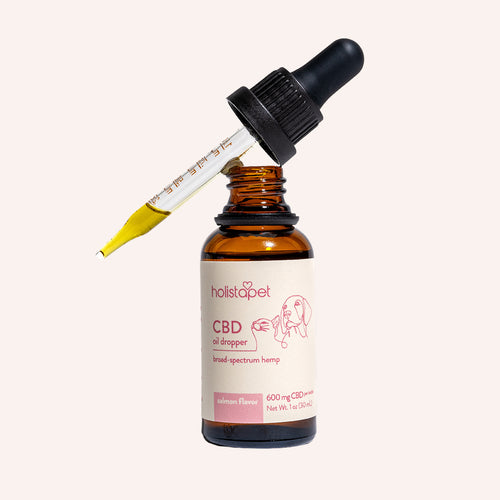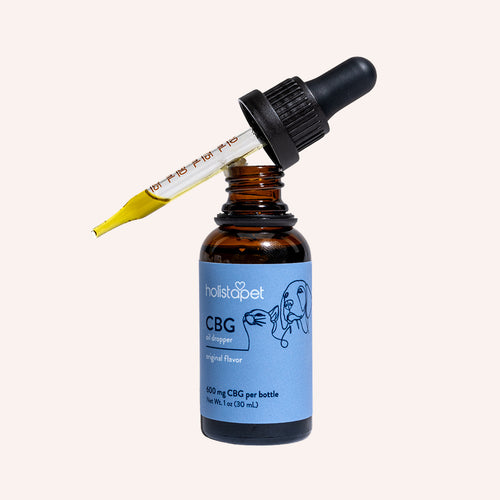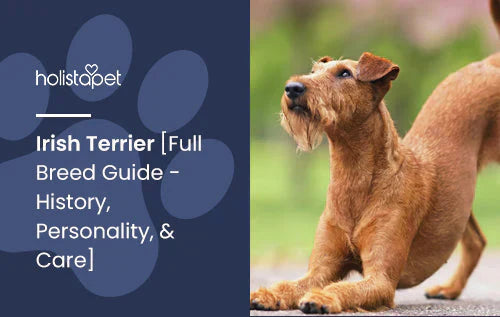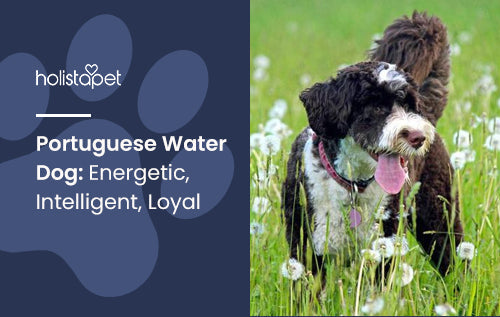Historically known for their keen ability to hunt moose, Norwegian Elkhounds are not as ferocious as their reputation or name might suggest. Rather, this active and playful dog breed prides itself on its intelligence, independence, and loyalty. For centuries, humans have depended upon the trusted leadership of Norwegian Elkhounds to locate prey for their sustenance. As a result, Norwegian Elkhounds have evolved into natural guard dogs ready to protect their owners at any given moment.
No longer used for hunting, Norwegian Elkhounds are hardy, affectionate dogs that make wonderful additions to any family. If you're curious about adopting a Norwegian Elkhound, read our expert guide on this majestic dog breed's history, characteristics, health issues, and needs!
Norwegian Elkhound Characteristics
Norwegian Elkhounds have a burly, athletic build with a deep chest and muscular legs. They have broad heads and pointy ears that are always at attention. They have expressive almond-shaped eyes that are dark brown. A fringed, slightly curled tail follows their squarely built frame and extends beyond their familiar medium-grey coat with hints of silver and black.
A typical Norwegian Elkhound has a thick double coat that provides seasonal protection. The outer coat of Elkhounds is very thick and coarse and helps to regulate body temperature. This durable topcoat comes in handy by protecting Elkhounds from rain and snow and is weather and dirt resistant. Underneath the outer coat lies a soft, dense, and wooly inner coat that sheds every spring.
Their thick fur, pointy ears, and protruding muzzles are common attributes of other northern-type dogs such as the Swedish Elkhound and Black Norwegian Elkhound.
Norwegian Elkhound Size
The Norwegian Elkhound is a medium-sized dog. There is very little disparity in height for Elkhounds. Males stand 20.5 inches tall, and females stand 19.5 inches tall.
The average Elkhound male weighs 55 pounds and is a touch heavier than females, who usually weigh 48 pounds.
Norwegian Elkhound Personality
The Norwegian Elkhound temperament is that of an extremely loyal companion and a very affectionate animal. Their temperament is rooted in their enthusiastic personality, intelligence, and independence. Since Norwegian Elkhounds are natural hunters, they are extremely active and like to roam around a lot. They get along well with family members and young children, as they are very high-spirited, playful dogs.
Elkhounds like to be the alpha dog when around other male dogs of similar size. Elkhounds can find it hard to get along with other dog breeds of similar temperaments. With proper training, Elkhounds can outgrow some of their stubbornness.
Elkhounds are fierce watchdogs with ferociously excessive barks. Their overprotective personality is one of the reasons why they make great family pets. Owners might find it difficult at first to calm Elkhounds when they start to bark. However, modern obedience training can alleviate this issue.
Norwegian Elkhound Exercise
The Norwegian Elkhound is a dog that requires vigorous exercise. From hunting elk to being a loyal watchdog, Elkhounds are spirited dogs that enjoy the outdoors. An Elkhound's exercise needs must be met to satisfy their natural urges. Here are some of the ways you can meet your Elkhound dog's exercise requirements.
Going For A Walk
Possibly the most important activity for any dog is going for a walk. Whereas most dogs are satisfied with one 30-minute walk a day, Elkhounds might require several.
A long walk lasting 60 to 90 minutes is good enough for an Elkhound. To really satisfy their activity needs, take them on a two-hour walk. Long daily walks will not only satisfy Elkhounds but keep them in tip-top shape.
Related: Expert Tips For Ensuring Your Dog Walks Are Trouble Free
An Outdoor Breed
Norwegian Elkhounds evolved to spend most of their day outdoors. These naturally active dogs do best in residences that have big enclosed yards. It's not advisable to keep them in smaller residences and apartments. By having extra outdoor space to roam, Elkhounds can meet their daily activity requirements.
These dogs are active, so make sure not to overexert them when it's hot. Norwegian Elkhounds enjoy swimming. Having an Elkhound join you in the pool is not only recommended but important to help them cool down on hot days.
Exercise With Family Members
Norwegian Elkhounds are great family pets that play well with equally energetic young children. The more engagement Elkhounds have with humans, the better. By combining activities like going for a walk, dog sports like fetch or frisbee, and playful activity with people, Elkhound owners can meet their daily activity needs.
Norwegian Elkhound Training
Training a Norwegian Elkhound can be quite a task. But because of their high intelligence, Elkhounds are highly trainable dogs. It's best to keep these training sessions active and short because they can get rather bored. They respond well to treats and praise.
Despite the constant positive reinforcement, owners should not expect their Elkhound to be passive or clingy. Owners have to accept that Elkhounds can be properly trained through proper obedience training but not at the expense of their independence.
Norwegian Elkhound History
Norwegian Elkhounds have been prized throughout history for their hardiness and usefulness as hunting dogs. However, their history is much more nuanced and dates back to ancient times.
Spitz Family Descendant
The Norwegian Elkhound is a spitz family dog. These dogs originated and are commonly found in colder parts of the world, usually in the northern hemisphere.
Spitz family dogs have a shaggy appearance punctuated by pointy ears. They have a heavy, robust double coat that protects them from severe cold weather. These characteristics helped the Norwegian Elkhound prosper amongst the unforgiving climate of Norway.
Ancient Breed Origins
Norwegian Elkhounds originated roughly one thousand years ago in Norway. Nordic art has depicted Elkhounds for centuries. They even accompanied Vikings on their many sailing voyages.
Yet, the true origin of the Norwegian Elkhound is rather muddled. Recent evidence suggests that the Norwegian Elkhound could be a more ancient breed than previously thought.
Archaeologists have found skeletons resembling Norwegian Elkhounds that date as far back as 5000 BC. The history of Norwegian Elkhounds has always been associated with aiding humankind. Their most impactful contribution has been their natural affinity towards hunting.
A Prized Hunting Dog
Ancient Norwegians used Elkhounds as hunting dogs amongst the rugged Norwegian terrain. Elkhounds would track and encircle their prey, and keep it at bay while they awaited hunters. Elkhounds became the eyes, ears, and noses of Nordic hunters.
These dogs became synonymous with hunting moose, hence their namesake — Norsk elghund, roughly translating to "Norwegian Moose Dog." However, they became more commonly known to the world as the Norwegian Elkhound.
Elkhounds became prized for their ability to hunt elk and other wild animals. They would hunt bears, deer, and wolves, along with smaller game like foxes and rabbits. Norwegians kept the Elkhound a secret from the world until The Norwegian Hunters Association held its first show in 1877. The American Kennel Club officially recognized the breed in 1913.
Norwegian Elkhound Health Problems
When compared to other dogs, Norwegian Elkhounds are a very healthy breed known for their long lifespans. Elkhounds have a typical lifespan of 12 to 14 years. Despite their longevity, Norwegian Elkhounds may have some minor to serious health problems. Here are the common health problems associated with the Norwegian Elkhound.
Vision Problems
Norwegian Elkhounds can develop or inherit multiple degenerative eye conditions. If untreated, these vision problems can lead to permanent blindness. Here are some of the most common eye conditions that affect the Norwegian Elkhound.
Glaucoma
Glaucoma is not just limited to humans. Elkhounds have been known to develop it as well. The many symptoms of glaucoma in Elkhounds include watery eyes, increased squinting, and hazy blue corneas. Take your Elkhound to the vet immediately if you notice any of these concerning symptoms.
Cataracts
For many older Elkhounds, cataracts are a common cause of blindness. Elkhounds suffer from cataracts when the lenses of their eyes become an opaque white color. However, this condition is easily fixed through surgery.
Progressive Retinal Atrophy
Progressive Retinal Atrophy (PRA) is a genetic disease that causes vision loss until affected dogs go blind. Norwegian Elkhounds are more predisposed to develop PRA than other dogs. Genetic tests are available to determine if your Elkhound suffers from this condition. Unfortunately, PRA cannot be cured.
Hip Dysplasia
The Orthopedic Foundation of America found that 20% of Elkhounds suffer from hip dysplasia. This inherited disease in Elkhounds leads to improperly formed hip joints and eventual arthritis. Early detection and treatment are key to preserving an Elkhound's quality of life. Surgery might be an option in severe cases.
Sebaceous Cysts
Sebaceous cysts are benign, slow-growing nodules underneath a dog's skin. They usually form along the head and neck regions of a dog and can be found behind the ears and anus.
There are numerous reasons why sebaceous cysts form in an Elkhound. The main reason is their thick double coats lead to the accumulation of oils and clogged skin pores. Like in most dogs, these cysts are very common, non-life-threatening, and easily treatable. Some cysts might not bother a dog at all. However, any growth should be properly evaluated and diagnosed by a veterinarian.
Kidney Disease
The Norwegian Elkhound is genetically predisposed to several disorders that affect the kidneys. Although these diseases are incurable, they can be managed.
Glomerulonephropathy
You can check whether there are high protein levels in the dog's urine to diagnose glomerulonephropathy. This disease causes gradual damage to an Elkhound's kidneys and leads to eventual kidney failure. Veterinarians recommend yearly urine analysis to determine the best course of action and treatment.
Fanconi Syndrome
Symptoms of Fanconi Syndrome appear between the ages of two and six. This syndrome allows for the escape of essential nutrients from an Elkhound's blood into their urine. The expulsion of vital nutrients from an Elkhound's body can lead to:
- Apathy
- Increased thirst
- Frequent urination
- Electrolyte imbalance
Diagnosing Fanconi Syndrome early through routine urine screenings can lead to timely treatment for your Elkhound.
Thyroid Issues
Hypothyroidism is common in Elkhounds. This condition prevents the body from making enough thyroid hormone. Symptoms can include:
- Weight gain
- Dry coat
- Hair loss
- Dry skin
- Aggression
You can easily diagnose thyroid issues with blood tests. Treatment is usually hormone replacement via oral medication.
How to Care for a Norwegian Elkhound
Although Norwegian Elkhounds are very independent, they still need proper care. Owners should always make sure their Norwegian Elkhound is comfortable at all times.
Handling
Elkhounds at a young age are easiest to manage. Never grab or pull small dogs by their ears, head, neck, or legs.
When carrying a Norwegian Elkhound puppy, place one hand directly beneath the Elkhound's chest. Use your other hand to support their bottom and hind legs. When lifting larger Elkhounds, always lift them from underneath and support them the same way you would an Elkhound puppy.
Proper Shelter
Norwegian Elkhounds have thick coats which keep them warm. This attribute comes in handy when in their native colder habitats. However, an Elkhounds' coat can be a major problem when living in warmer conditions.
We recommend that every owner invests in a doghouse for their Norwegian Elkhound. The doghouse should be sturdy, spacious, and provide enough protection from direct sun and heat. That same doghouse should also protect from the extremes of cold weather. Since Elkhounds spend most of their time outdoors, make sure that ample cool water is around to prevent overheating.
Always bring Elkhounds indoors if the outdoor heat becomes unbearable. Like humans, Norwegian Elkhounds need proper heat and cold protection at all times.
Proper Identification
Get your Elkhound a collar with proper identification in case it gets loose and runs away. By following your local city's pet licensing laws, proper identification will prevent your dog from ending up in the shelter with other dogs.
Nutrition and Feeding for a Norwegian Elkhound
An active lifestyle requires an active eating schedule. But what exactly are a Norwegian Elkhound's dietary needs, and how often should they be fed?
Norwegian Elkhound Nutritional Needs
Norwegian Elkhounds are not picky eaters and typically eat 2 to 2.5 cups of dry high-quality, well-balanced, protein-rich dog food a day. Elkhound owners who wish to make their dog food at home should get veterinarian approval beforehand.
For many owners, it might be tempting to toss Elkhounds human foods as treats instead of natural dog treats. However, this can lead to food sensitivity and obesity. It's always advisable to check with your veterinarian regarding your dog's diet and possible allergies to certain foods before starting a regular feeding routine.
Norwegian Elkhound Feeding Routines
Norwegian Elkhounds need proper sustenance to maintain their active lifestyles. Many Elkhound owners might be uncertain about how much and how often they should feed their dogs. A Norwegian Elkhound's diet and feeding schedule are wholly dependent on how old the dog is.
Whether you're dealing with a newborn Norwegian Elkhound puppy or a veteran adult dog, Elkhound feeding routines are rarely the same and differ with the dog's age. Typical feeding routines for Norwegian Elkhounds are as follows:
- 8 to 12 weeks: Four small meals per day
- 3 to 6 months: Three small meals per day
- 6 months to 1-year: Two meals per day
- > 1-year (Adult): Feed once a day. However, they can eat up to 2 small meals a day
Not all Elkhounds are the same when it comes to their dietary needs. Use this feeding schedule as a guide to determine what feeding routine is right for your dog. It's the owner's responsibility to understand their Elkhounds' dietary needs to determine how much and how often their dog needs to eat.
Coat Color And Grooming
Taking care of a Norwegian Elkhound's coat and hygiene is no simple matter. Let's look at the nuances in coat color and grooming needs to determine how best to take care of them.
Norwegian Elkhound Coat Color
Black and gray or black and silver are the most common coat color variations for Norwegian Elkhounds. Some Elkhounds sport a tri-color coat accented by white or gray hairs. Most Norwegian Elkhounds usually have black-tipped gray coats underscored by hints of silver throughout.
No one color dominates an elkhound's coat color. When it does, the dog is considered a different breed altogether, such as the Black Norwegian Elkhound.
Norwegian Elkhound Grooming
Grooming a Norwegian Elkhound can be quite the task, but it doesn't have to be with daily maintenance and proper grooming techniques. It's typical to give an Elkhound a bath two to three times a year as they are relatively clean dogs due to their topcoat being resistant to dirt and debris.
Their soft and wooly undercoat typically sheds during spring, leaving large balls of fur strewn everywhere. Elkhounds are not a hypoallergenic breed. For pet parents, shedding season can be an extremely frustrating time. However, owners should take part in the daily maintenance of their Elkhounds to prevent any grooming nightmares.
Combing an Elkhound's coat in the direction of the hair with a simple slicker brush or a comb with long teeth for two minutes a day can drastically reduce the amount of shed around the house. If combing becomes difficult, dampen the Elkhound's coat, blow-dry it in a circular motion using low heat, and use a brush to gently comb through the coat. This technique loosens mats of hair that become tangled in their coat and soothes their skin which is more sensitive than other dogs.
Essential Norwegian Elkhound Grooming Supplies
The following is a list of essential supplies to have on hand when grooming a Norwegian Elkhound:
- Brush: This is the most basic and important of grooming supplies for a Norwegian Elkhound owner. Owners should use a good quality slicker brush daily to comb through their dog's coat to loosen hair mats and ease seasonal shedding.
- Comb: You can use a long tooth comb, typically 1-1.5 inches, to ease Elkhound shedding. Combs can help significantly in maintaining your dog's appearance.
- Nail Clippers: Dog toenails can grow extremely long and lead to discomfort when walking. Norwegian Elkhounds should have their toenails clipped every three to four weeks.
- High-Quality Dog Shampoo and Conditioner: It's best to take your dog to a certified groomer to clean their coat several times a year. However, if you're feeling adventurous, you can always do it yourself. You'll need a high-quality shampoo and conditioner to help you preserve an Elkhound's beautiful coat.
Children And Other Pets
Norwegian Elkhounds are, by nature, high-energy dogs. Because they like to roam around and are relatively independent, they do well with children. A Norwegian Elkhound's rambunctious personality makes them extremely affectionate with children, especially when engaged in play.
The more familiar the surroundings, the more affectionate Norwegian Elkhounds will be. When getting acclimated to their new family or when around strangers, Elkhounds can be more reserved than usual but quickly grow out of these shy first stages.
Of concern is the Norwegian Elkhound's natural hunting tendencies and how they might mistake smaller pets like hamsters or guinea pigs for prey. Owners should exercise caution with Elkhounds, especially when around smaller pets.
Rescue Groups
There are numerous Norwegian Elkhound rescue groups in the United States. The Norwegian Elkhound Association of America (NEAA), a national dog organization approved by the American Kennel Club (AKC), offers direct ways to reach out to several rescue contacts across the country to adopt elkhound rescues.
The Rescue Shelter Network has listings of Norwegian Elkhound rescue groups located in all fifty states in addition to international rescue groups in Canada, Australia, and the United Kingdom.
Rescue vs. Rehome
When choosing to adopt a Norwegian Elkhound, owners have the option to adopt one that is either a rescue or one that is rehomed.
There can be many advantages to adopting a rehomed dog. Unlike rescue dogs, rehomed dogs are not strays with unknown histories. Rehomed dogs have a documented origin and records of their temperament and health history.
Owners typically rehome dogs because they can no longer care for the animal. Sudden life changes or emergencies such as hospitalization or the death of the owner are the main reasons for rehoming a dog.
Breed Organizations
The NEAA is the most trusted national breed club for Elkhound dog breeds. They have partnered with the AKC to provide approved Breeders of Merit for those wishing to adopt Norwegian Elkhounds.
Using Elkhounds to hunt in Norway is not as common anymore. Coupled with spay and neuter campaigns and laws limiting dog breeding, the Norwegian Elkhound population is now endangered. It's of high importance that breeders continue their best efforts to keep this majestic breed safe from extinction.
More About This Dog Breed
Intelligent, loyal, and tremendously energetic, the Norwegian Elkhound will give every dog owner an engaging and active companion and make for the perfect family pet. Their wolf-like appearance and intimidating bark make the Norwegian Elkhound great guard dogs. Elkhounds don't do well in small, enclosed spaces and prefer larger properties, preferably with a big enclosed yard. Be sure to keep them active; this dog likes to play!
A relatively healthy dog, the Norwegian Elkhound can live up to 14 years. Elkhounds can suffer from several hereditary health problems. However, a veterinarian can diagnose and help you manage these issues before they become severe. Elkhounds are an endangered breed, so do yourself a favor and help rescue or rehome a Norwegian Elkhound today!

![Norwegian Elkhound Dog Breed Temperament & Personality [Full Guide]](http://www.holistapet.com/cdn/shop/articles/164_520x500_12ab2d05-7ad5-47d7-a847-43bbb40e1dc0.jpg?v=1738275821&width=1500)
 CBD Oil for Dogs - Fast Acting
CBD Oil for Dogs - Fast Acting
 Chicken Flavored CBD Oil For Dogs - Easy Dose
Chicken Flavored CBD Oil For Dogs - Easy Dose
 Salmon Flavored CBD Oil For Dogs - Highly Rated
Salmon Flavored CBD Oil For Dogs - Highly Rated
 CBG Oil for Dogs and Cats - Loved by Thousands
CBG Oil for Dogs and Cats - Loved by Thousands





Leave a comment
All comments are moderated before being published.
This site is protected by hCaptcha and the hCaptcha Privacy Policy and Terms of Service apply.